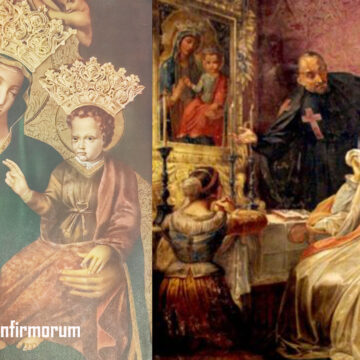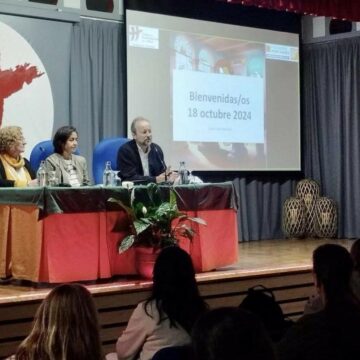 In the last edition reference was made to the importance of quality of life as the goal of care in a hospice. Nothing is left to chance to offer to those in a hospice care that is directed towards appreciating every individual moment that is spent inside it.
In the last edition reference was made to the importance of quality of life as the goal of care in a hospice. Nothing is left to chance to offer to those in a hospice care that is directed towards appreciating every individual moment that is spent inside it.
Care for the person is of notable importance, above all when it seeks to limit the damage caused by an illness and the treatment that then follows. In particular, an attempt is made to help those in a hospice to attend to their physical and aesthetic appearance, helping them to recover their self-esteem.
Everything was born at a chance meeting at the Hospice Luigi Tezza with a young woman. Two chats at a small table with that young woman, with her little hat and its not colourful colour that fell over her temple and a hunched posture almost to hide from the world, who asked to speak about easy things. She did not want to refer to her illness or to death; she only wanted to spend some time in an easy way.
My personal history
In the plans for my provision of care it was not envisaged that I should meet her, but man proposes and God disposes. Thus we spoke to each other and when going back home at the end of the day my thoughts were fixed on her difficult wish which it would be difficult to satisfy in a place that forced her to face up to death.
I then remembered what made me feel well when cancer entered my own life. I remembered my day at work when, passing my hands through my hair, I found that it came out in my hands. Amazement and anxiety. I knew that that moment would arrive but I did not feel ready for it. That evening, at home, I hoped that my hair was no longer falling out…a disaster! I then shed some tears and looking at myself in the mirror I shaved it all off with a razor. I had to cut my hair – it was not for my cancer to steal it from me. But how could I tell my son about this, a boy aged fourteen? I put on a coloured turban, I went up to him, and I said: “I have cut off my hair”. He looked at me and went on doing what he was doing, wounding me a little with his indifference. But he never saw my shaved head because I always wore a turban or a wig. The treatment gets inside you and overwhelms everything that it meets, leaving behind a body that is like a battlefield. Nausea, vomit, pains, you lose your hair, the hairs on your body, your eyebrows, your skins changes colour and the mirror shows you a body that you do not recognise. Every day you wake up with that terrible taste in your mouth and you know that you have to go to war. Thus it was that I got up and did my make up in an attempt to rediscover my familiar self-image. Skin cream, eye shadow and a wig, every day a different one, to tell my cancer that it had not defeated me. I could still smile. I very quickly understood that a smile was the only weapon on which I could rely. Thus during the dark moments, as well, I never stopped smiling.
The value of a smile
To go back to the young woman in the hospice, I observed that she did not smile, and so I thought that I would not be able to help her to feel beautiful again, different to how she saw herself. I got a suitcase and filled it with all my things – wigs, turbans, scarves, foulards, scented creams – and I took them to the hospice. With psychology section and the team we planned an afternoon of cuddles and she agreed.
When I accompanied her to the room that had been organised for her, her joy was evident. Everything was spontaneous. Like a girl she decided to try on everything and she allowed herself to be cuddled. A scented cream, some light make-up, and a smile broke out once again on her very beautiful face. We took a very large number of photographs. I recall her joy with emotion, a happiness that came from all the pores of her skin. I went back to the hospice on a number of other occasions in order to help her with her make-up; I left her a wig that I had bought for her; and I took her some photographs of that afternoon. Looking at them she said to me: “She’s beautiful, but that’s not me”. Then she chose another photograph and told me that she wanted it to be put on her grave.
For that young woman things had by now gone too far and I was not able to do very much; she had already closed herself up in her cocoon, and not even seeing herself beautiful helped her to relate to others and herself. Nonetheless, I was able to perceive how taking care of her body and the recovery of part of her lost beauty had played an important role in her fight against her devastating illness. I realised this only some time later – she was by now near to her death – when that young woman chose for her obituary one of the photographs that had been taken during her treatment. This enabled me to understand that those smiles had been truly important for her and that at least one had stayed in her heart.
Elisabetta Poggi















Camillians on Facebook
Camillians on Twitter
Camillians on Instagram